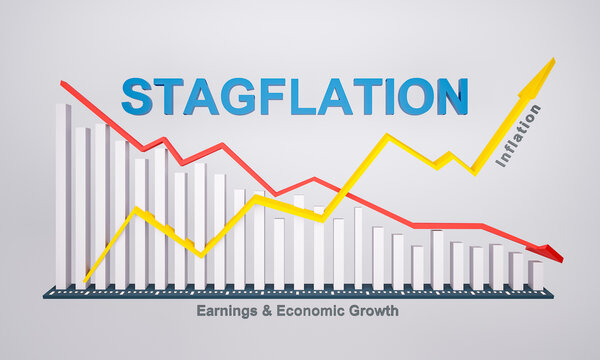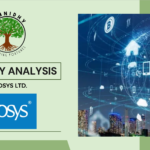
On September 2021, Liz Truss, former Foreign Secretary swept past former Treasury Chief Rishi Sunak in September to become Britain’s third female prime minister. After taking oath as the Prime Minister, she had several duties on her hand. The Office for National Statistics’ recent data has clarified that the economy has fallen in three months from October to December.
According to the economics term, a period of slow or stagnant economic development and high inflation is referred to as stagflation. Together, they have the potential to have disastrous long-term impacts on our financial situation and the economy.
The threat of stagflation is present due to UK’s weaker-than-expected economic growth and the country’s persistently high inflation rate of 10.7%. Let’s dive into the story of UK – one of the most globalized economies now known for its economic and political crisis.
UK timeline – Past years
In the recent years, rapid changes have been observed in the economic and political spectrum of UK. But given the recent history of the British Conservatives, whose most recent problems have been in the works for years, the leadership change is hardly an exception.
- David Cameron (2010-2016)
The leadership crisis had been attributed by some to internal conflicts within the Conservative Party regarding Britain’s involvement in the European Union during the time when David Cameron was the Prime Minister (2010-2016). To address this disagreement, Cameron, who was in favor of remaining in the EU, decided to hold a nationwide referendum on Britain’s membership in the bloc. This referendum, held in 2016, resulted in a close vote with slightly over half of the voters choosing to leave the EU and the other half choosing to remain. The outcome of the referendum was Brexit and ultimately led to Cameron’s resignation.
- Theresa May (2016-2019)
After David Cameron stepped down, Theresa May became the leader of the Conservative party and the Prime Minister. She was given the task of making sure that Britain left the European Union, which is called “Brexit”. She held this job for over 3 years. During this time, the British government and the EU were trying to work out the details of how Britain would leave the EU, but it was not successful. The agreement that the government came up with was rejected three times by the House of Commons. It was a difficult time with both sides were not able to agree. Due to a lot of pressure and people quitting her government over Brexit, may eventually was pressured to step down from her position as Prime Minister.
Boris Johnson (2019-2021)
In the summer of 2019, Boris Johnson became the new Prime Minister of Britain. He was elected as the third Prime Minister in just a few years. He was someone who supported Britain leaving the European Union and in January 2020 after 4 years of disagreements with the EU, Britain finally left the EU. But shortly after that, a new problem came up, the coronavirus pandemic. Johnson was criticized for not taking the necessary action immediately to stop the spread of the virus. For instance, not stopping travel and not setting up good testing and tracing system. On the other hand, he did receive praises for getting a lot of people vaccinated quickly. But because of the strict rules on businesses and gatherings that the government put in place, it led to the end of his time as Prime Minister.
Liz Truss (44 days)
In September 2021, Liz Truss, who was a supporter of Boris Johnson, became the third woman to be the Prime Minister of Britain and the last leader to meet with Queen Elizabeth II. However, her time in office was very short, she held the position for only 44 days which is the shortest of any Prime Minister in modern British history. Her downfall was quick; the value of the British pound went down after she announced her budget plan which included tax cuts without enough money to pay for them. To try to fix the problem, she changed her plan and replaced Kwasi Kwarteng (Finance Minister). But then Home Secretary Suella Braverman resigned and criticized Truss, and many people in Truss’s own party called for her to resign as well.
UK is wrapped up by an economic crisis of its own making?
After Boris resigned, Liz Truss became the Prime Minister of the UK. She promised to make the country’s economy strong and successful in the long run. But things had not gone as planned. Ever since she took over the office, the cost of mortgages went up, the value of the British currency (pound) dropped to its lowest point ever, and there’s been a lot of confusion and uncertainty in the markets that handle bonds as the rates increased from 3.37% on September 22nd to 4.53%. All of this caused major problems for the country’s financial stability.
Liz Truss Parliament’s Economic Plan
When Liz Truss became Prime Minister, the country was already facing a lot of problems like high living costs, a war in Ukraine and the ongoing effects of the COVID-19 pandemic. To try and fix these problems, she announced a big plan to cut taxes and spend more money, but she didn’t say how the government would pay for it. This made people worried about how the government will pay its bills, and it made them question the Prime Minister’s ability to manage the economy as she was elected as PM when there was a lot of infighting among the members of the ruling Conservative Party to choose a new leader. The leader of the country’s financial department, Kwasi Kwarteng, announced a plan: a mini budget to decrease taxes by 45 billion pounds and make it easier for businesses to invest and grow. He also stated that the government will borrow at least 60 billion pounds to control the high energy prices that have been causing problems for families and businesses living expenses. The aim of the government is to improve the economic growth rate to an average of 2.5% per year, which they believe will generate more revenue from taxes and provide more funding for public services

Reactions of the financial markets
The value of the British currency (pound) dropped to its lowest point ever compared to the US dollar, going as low as $1.038 on September 26th. This is because the investors were not confident in the British currency. Even though it has recovered a bit, it is still down about 2% since the announcement of the economic plan.
This drop in the value of the pound also made it more expensive for the government to borrow money. The rate at which the government borrows money (called yield on government bonds) increased from 3.37% on September 22nd to 4.53% on September 27th.

To try and fix this, the Bank of England, which controls the country’s funds, announced an emergency plan on September 28th to buy a large amount of long-term government bonds to stabilize the market and protect pension funds.
Interest Rates and Inflation Level
Inflation rate in the UK is one of the highest among G7 countries like Germany, Spain, and France. The consumer prices index (CPI) rate was 10.7% in the past 12 months and the older Retail Prices Index measure was 14%. Some of the main reasons for the high inflation are: increased energy costs, food prices and the high cost of home repairs and improvements, according to the Office for National Statistics.

As a response to high inflation, the Bank of England, which controls the country’s funds, has raised the base rate of interest from 0.1% in December 2021 to 3.5% just a year later. This is the ninth consecutive increase in the base rate. The idea behind raising the interest rate is that if borrowing money becomes more expensive, people will spend less. This will reduce the demand for goods and services and help to bring down prices and slow the inflation rate.
The base rate had been at a very low 0.1% between March 2020 and December 2021 to encourage households to spend money and get the economy moving. It also helped businesses to borrow money cheaply to survive the economic shock caused by the pandemic.
Is UK economy heading for stagflation?

The United Kingdom is currently facing a high rate of inflation, which is when prices for goods and services increase. Some of the reasons for this include higher energy costs, food prices, and the cost of home repairs and improvements. Additionally, the current economic situation is complicated by factors such as Brexit, the ongoing Covid-19 pandemic, and conflicts in other countries affecting global supply chains. As a result, businesses are struggling to find enough workers and are having to pay higher wages, which in turn drives prices up even further. This is a difficult situation for the country, as the economy is not growing at the same pace as prices are increasing.
Conclusion
In summary, the United Kingdom looks like it is currently advancing towards stagflation due to a combination of factors such as high inflation, a decline in the value of the pound, and a rise in interest rates. The rise in inflation is being driven by factors such as energy costs, food prices, and the cost of home repairs and improvements. The government has attempted to address this issue by announcing plans to cut taxes and reduce red tape to promote economic growth, but these plans have had limited success. The country is also facing a shortage of labors and a decline in the workforce due to the impact of the Covid-19 pandemic as well as Brexit. Businesses are demanded to pay higher wages to attract skilled staff, which is pushing up prices. The economic crisis is being further aggravated by a global shortage of gas supplies and the Ukraine conflict, which is pushing up the price of oil. Overall, it is a challenging time for the UK economy and it is unclear when the situation will improve. The economy, UK and the citizens now depends on Rishi Sunak to navigate the country through the current economic crisis in the right directions.
References
https://www.usnews.com/news/business/articles/2022-10-12/explainer-what-caused-uks-economic-crisis-and-whats-next#:~:text=EXPLAINER%3A%20What%20Caused%20UK%27s%20Economic%20Crisis%20and%20What%27s,plan%20introduced%20last%20month%20to%20stabilize%20financial%20markets
https://edition.cnn.com/2022/09/29/economy/uk-economic-crisis/index.html
https://thewire.in/world/rishi-sunak-uk-prime-minister-challenges
– Editor TJEF
Bhagavath Manickavasagam
















Leave a comment